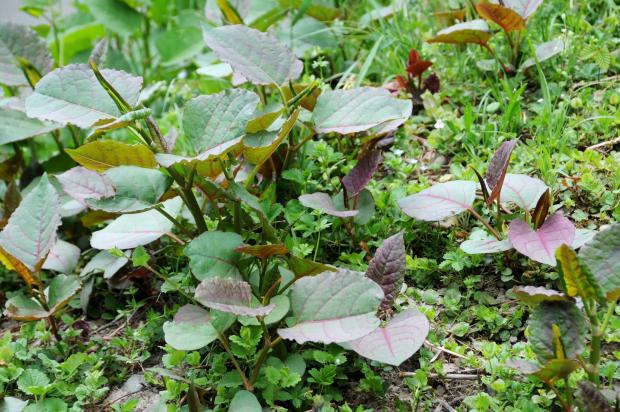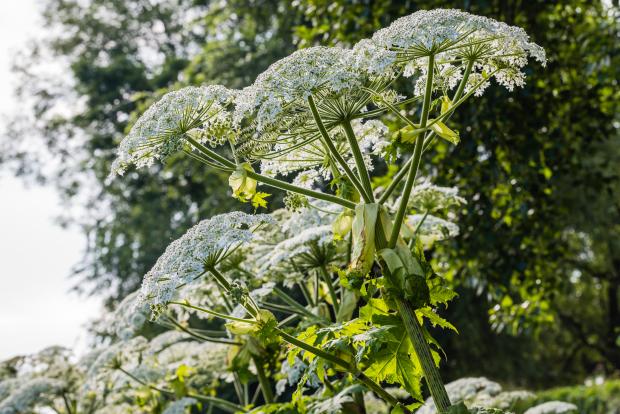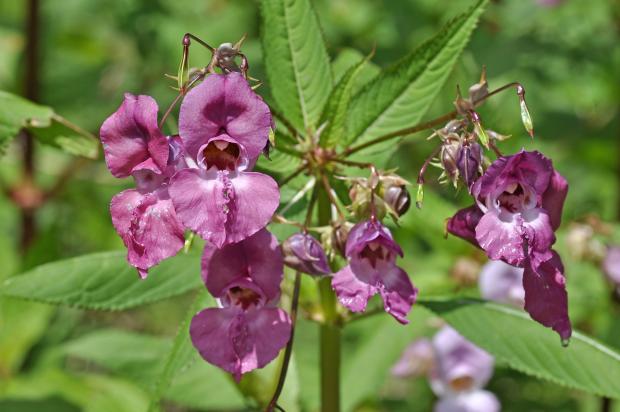Invasive non-native plants
There are many non-native plant species in Northern Ireland which don’t cause problems. But, a few can become invasive and upset the balance of the ecosystem. They are often bigger, faster-growing or more aggressive than native species and may take over the habitat where they grow.
Stop the spread of invasive non-native plants
There are several steps you can take to stop the spread of invasive plants, including:
- know what is growing in your garden – you can get help identifying invasive non-native plants on the Invasive Species Northern Ireland website
- manage invasive non-native species on your land – the Invasive Species Northern Ireland website has advice for a wide range of species
- dispose of all plant waste responsibly – it is illegal to plant or cause the spread of many invasive non-native plant species so be careful when disposing
- know what you are buying - avoid buying plants or seeds known to be invasive
Report sightings online
In Northern Ireland, the Centre for Environmental Data and Recording (CEDaR) collates wildlife records for both native and invasive non-native species.
You can record your sightings on their website either as a single record event or you can register with them and send details through a free online account.
Identifying common invasive non-native plants
Japanese knotweed, giant hogweed and Himalayan balsam are three of the most common invasive non-native plants in Northern Ireland.
Japanese knotweed
Appearance

It forms dense clumps which can be up to three metres in height. It has a hollow stem, similar to bamboo, but is often flecked with dark purple. The leaves are heart or shield shaped and the flowers are delicate and creamy white.
Where it's found
It is now widespread in many habitats like roadsides, riverbanks, railways and derelict land where its movement is unrestricted.
How it spreads
The main way it spreads is through the deliberate or accidental movement of rhizome fragments or cut stems. It is difficult to control due to its deep root system, which can grow up to three metres in depth and seven metres horizontally.
Tiny fragments of its root, as little as 0.7g can produce a plant. The plant can grow as much as two centimetres a day, in any type of soil. It can grow through hard structures such as walls and concrete if there is an existing fault or crack.
Risks to health
It is not harmful to human health.
Giant hogweed
Appearance

Giant hogweed is different to the native hogweed and cow parsley. It can reach a height of three to five metres.
Where it's found
It is usually found in areas of damp soils, such as river banks.
How it spreads
Each flower head can produce up to 50,000 seeds which are easily spread by flood water. This means it can quickly take over an area. Its seeds can live for up to 20 years, so treatment must be continued until the soil seed bank is fully exhausted and there is no further growth.
Giant hogweed has been identified as a Widely Spread Species in Northern Ireland.
Risks to health
Giant hogweed has a sap which irritates skin when exposed to sunlight. Symptoms are usually noticed within 24 hours and include blistering and swelling on the skin. This may be made worse by over-exposure to the sun.
If you come into contact with it, cover the affected area immediately to avoid exposure to the sun. Wash the area with cold water. If there is blistering or there is contact with the eyes, get medical advice.
Himalayan balsam
Appearance

Himalayan balsam has pinky red stems with dark green leaves.
Where it's found
It is usually found in areas of damp soil such as river banks and nearby woodlands.
How it spreads
The plant can produce large quantities of seeds in exploding capsules that can throw seeds several metres away from the parent plant. This allows it to quickly take over the habitat it is in.
Himalayan balsam has been identified as a Widely Spread Species in Northern Ireland.
Risks to health
It is not harmful to human health.
More information
More help on how to identify and treat Japanese knotweed, giant hogweed and Himalayan balsam can be found on the Invasive Species Ireland website.